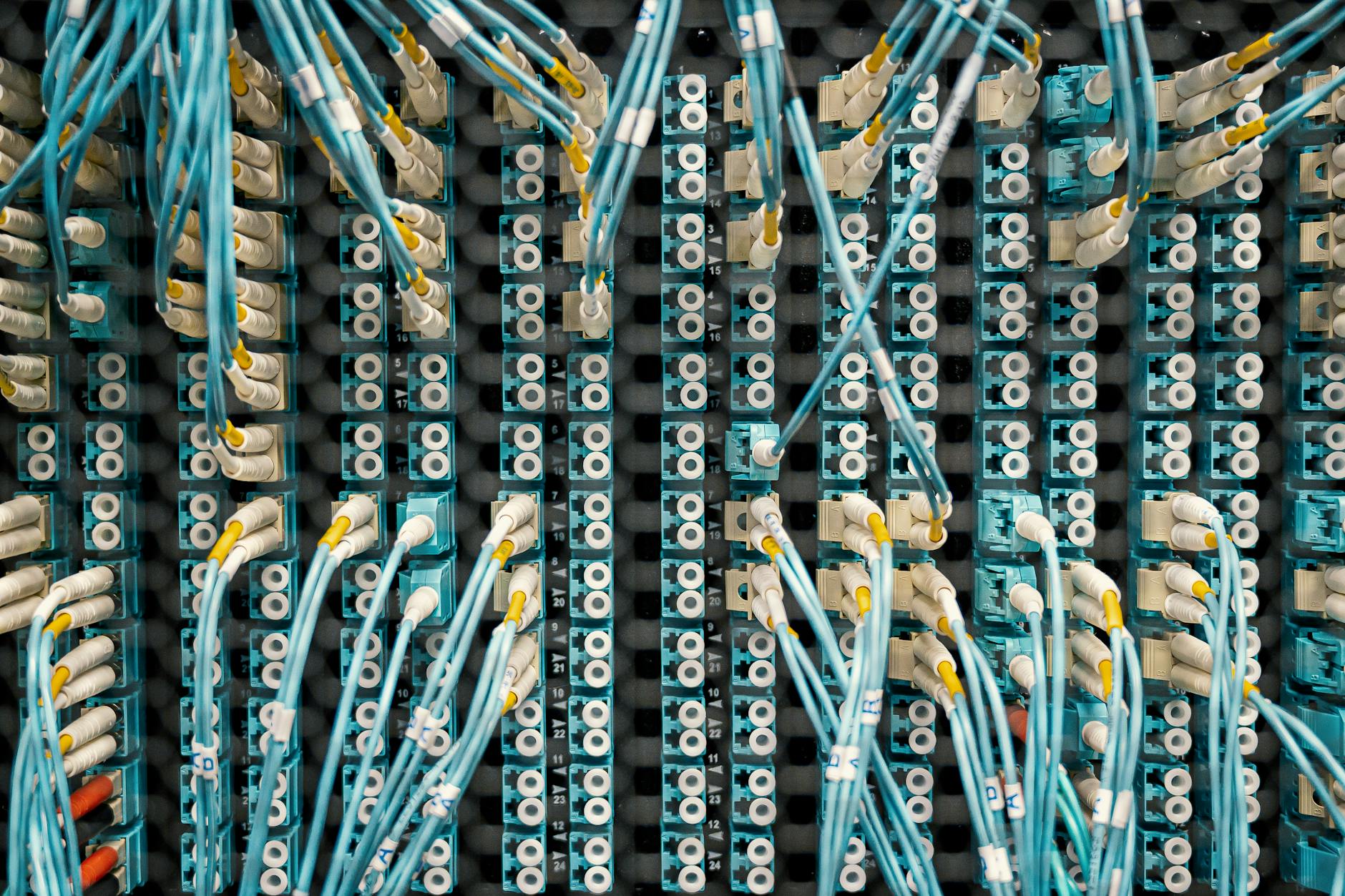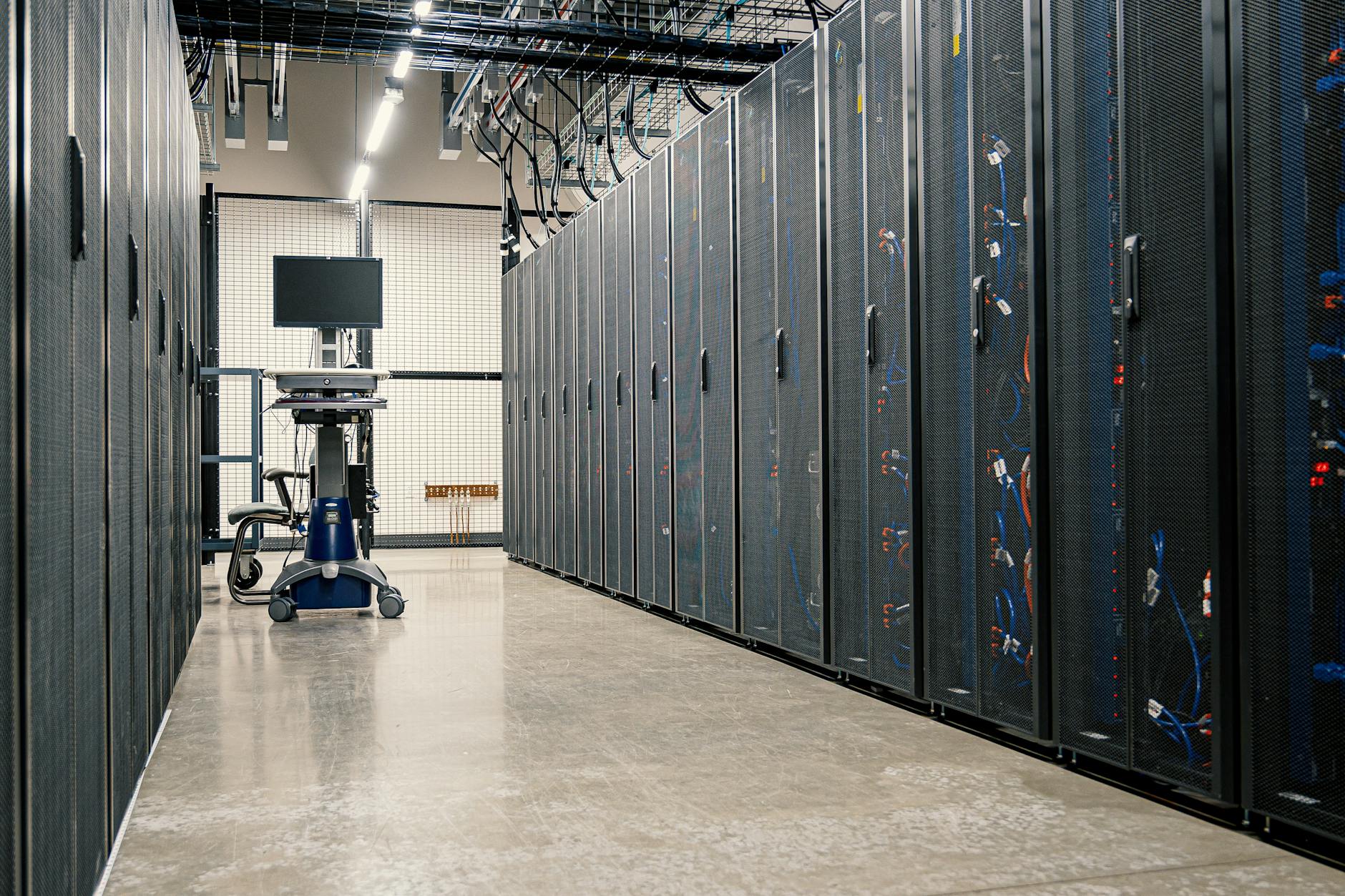Broadband Penetration in South America in Detail
Internet Infrastructure Overview
Let’s chat about internet infrastructure in South America. This is a big deal when it comes to the area’s digital growth and how fast folks are connecting online. We’re going to take a good look at who’s online, who’s not, and how that shiny new 4G tech’s pumping up the speed of our digital waves.
Internet Penetration Rates
So, internet penetration rates—you know, that’s just a fancy way of saying how many people around here can jump online anytime they want. By the kick-off of 2024, almost three-quarters of folks in Latin America had internet access, ringing in at 74.63 percent. In South America, things are looking even better with an 80.6 percent connectivity rate in 2023 (Statista). When you stack these numbers against other places like the Caribbean, where they’re hanging out at 68.4 percent, South America’s doing alright.
| Region | Internet Penetration Rate (2023) |
|---|---|
| South America | 80.6% |
| Caribbean | 68.4% |
| Latin America | 74.63% |
Want to know more about who’s plugged in and who’s still buffering? Check out our piece on south american internet connectivity.
Investments in 4G Infrastructure
Now let’s talk about that 4G magic that’s making mobile connections faster than a caffeine-fueled squirrel. It’s forecasted that we’re looking at about 211.5 billion U.S. dollars in cash being funneled into 4G networks across Latin America and the Caribbean by 2030 (Statista). This investment is a game changer for folks living far from city lights, closing the urban-rural gap, making money moves, and pulling more peeps online.
Take Peru, for example—they’ve been raking in the benefits of these investments. The urban-rural bridge got a whole lot shorter, and now Peru’s strutting around as the fifth largest online crowd on the continent in 2023. It’s clear that pumping up the infrastructure is the way to boost connectivity across all kinds of landscapes (Redalyc).
If you’re curious about how these investments are reshaping the region, stash away some time with our insights on digital infrastructure in latin america.
By throwing some serious cash at infrastructure and riding the wave of new tech, South American nations are making a solid run towards getting everyone online. It’s gonna take dipping into about 0.12% of the annual GDP over the next decade, but hey, it’s the ticket to bringing everyone together on the digital scene (World Economic Forum).
For a deeper dig into what this means for the phone and internet business down south, take a gander at our deep dive into the telecommunications industry in south america.
Internet Access Disparities
South America’s internet scene is like a patchwork quilt—some parts are thriving with connectivity, while others are just stitching things together. This digital gap is no small potatoes, folks. It’s the core challenge and opportunity for ramping up broadband access across diverse areas.
Disparities in South American Countries
When you take a stroll through South America, you’ll notice the internet isn’t the same everywhere. City folks are surfing online much more than their countryside counterparts. Just look at the numbers: only 40% of rural Latin Americans can hop online versus 71% in cities.
| Country | Urban Connectivity (%) | Rural Connectivity (%) |
|---|---|---|
| Argentina | 78 | 42 |
| Brazil | 75 | 45 |
| Colombia | 70 | 35 |
| Venezuela | 65 | 30 |
| Mexico | 80 | 50 |
Take Venezuela for example. They’ve poured cash into mobile services, yet most internet cruising is happening on desktops. This mobile broadband gap compared to fixed services? It’s like choosing horse-drawn carts in a sports car world—maybe due to money woes or tech hiccups. Want more puzzle pieces? Check out our deep dive into digital infrastructure in Latin America.
Impact of Data Costs
Here’s the kicker: mobile data isn’t cheap and that’s putting a dent in internet access. Imagine burning through 2.7% of your monthly paycheck for a measly 1 GB! That’s more than what’s considered affordable by International Telecommunication Union standards. Quite the wallet-buster, right?
| Country | Cost of 1GB Mobile Data (% of GDP per Capita) |
|---|---|
| Mexico | 3.5 |
| Venezuela | 3.2 |
| Costa Rica | 3.1 |
| Argentina | 2.9 |
| Peru | 2.8 |
Mexico, Venezuela, and Costa Rica are charging a pretty penny for data, followed by Argentina and Peru, making it hard to get everyone online. This keeps the digital borders strong. For more nuggets of wisdom, check out our detailed sneak peek into the telecommunications industry in South America.
The high price of staying connected isn’t just a financial headache. It cuts folks off from things like schooling, doctor’s updates, and money-making gigs, especially if you’re out in the sticks. Want to dig deeper? Click through to our musings on south american internet connectivity and the south america data center market for the full scoop on what this means for internet access and tech life.
Internet Penetration by Country
Argentina’s Internet Scene
Argentina is taking the lead in the race for more widespread broadband access in South America, boasting a whopping 87% of folks online. Back in the day, 2012 to be exact, this was just at 56%. So, what’s behind this leap? Money and good ol’ government moves. Argentina’s not just about one flavor of internet; they’ve got a mix of fixed and mobile connections, making sure everyone’s got a way in.
Brazil’s Connectivity Numbers
And in Brazil, they’re no slouches either with an 84% penetration rate, up from a humble 49% in 2012. Sure, the country’s got its fair share of wild geography and a crazy mix of people… but that’s just part of the fun for telecom companies. Some folks still aren’t connected, mostly because they ain’t got the means or know-how. But Brazil’s pulling out all the stops with big leaps in both fixed and mobile tech to keep shrinking the gap.
Mexico’s Internet Boom
Down in Mexico, they’re all about pushing those connectivity numbers, jumping to 77% from just 40% in 2012. A big thanks to strong 4G investments and government efforts to rope more folks into the digital fold. Mobile’s king, especially when it comes to reaching those out-of-the-way spots. So for many, the phone in the hand is their ticket online.
Colombia’s Online Life
Over in Colombia, things are buzzing too with a 76% online rate, climbing up from 49% back in 2012. However, where you live still plays a big role; city folks typically have better access than those in the countryside. Keeping Colombia connected is all about expanding the reach of both fixed lines and mobile connections. The goal? To stitch every community into this growing digital quilt.
| Country | Internet Penetration (2023) | Internet Penetration (2012) |
|---|---|---|
| Argentina | 87% | 56% |
| Brazil | 84% | 49% |
| Mexico | 77% | 40% |
| Colombia | 76% | 49% |
Diving into these countries’ internet scenes shows us the strides South America is making in digital connectivity. Want more details? Check out our pieces on digital infrastructure in Latin America and the telecommunications scene in South America.
Mobile Data Affordability
Cost Comparison Across Countries
Checking out the price of mobile data in South America shows a wild mix of costs. Mexico, Venezuela, and Costa Rica lead the charts with the priciest mobile data when stacked against GDP per person. Argentina and Peru hover in the middle. Meanwhile, Brazil, Chile, Colombia, and Uruguay enjoy some of the cheapest rates around (Bloomberg Línea).
| Country | Cost of 1GB (% of GDP per capita) |
|---|---|
| Mexico | High |
| Venezuela | High |
| Costa Rica | High |
| Argentina | Medium |
| Peru | Medium |
| Brazil | Low |
| Chile | Low |
| Colombia | Low |
| Uruguay | Low |
These price differences highlight the struggle in making broadband equal across South America. Curious? Check our article on South American internet connectivity.
Affordability Challenges for the Population
The cost of staying connected is a big deal for folks in South America. Data plans alone chew up about 2.7% of the monthly family budget in Latin America and the Caribbean. Too steep, as the International Telecommunication Union suggests keeping it under 2% (World Economic Forum). Low-income families feel the pinch hardest.
And it’s not just the data. The cheapest smartphones can cost up to 84% of someone’s earnings in some areas (World Economic Forum). Such high costs keep many from tapping into digital solutions, widening the digital gap.
To tackle this, we need smart planning and cash flow to make data more affordable. Building up digital infrastructure in Latin America can lower costs and spread internet access to everyone.
Ready for more? Explore the nitty-gritty details in our pieces on the telecommunications industry in South America and the South America data center market.
Social Impact of Connectivity
Inclusion of Middle and Lower Classes
In South America, the internet is opening new doors, especially for the middle and lower classes. Bloomberg Línea points out that a rise in internet access is driven by bringing these groups into the digital fold. This shift isn’t just about putting more folks online; it’s about leveling the playing field, offering a wider array of social perks and opening the gates to info and services for everyone.
| Class | Internet Penetration (%) |
|---|---|
| Middle | 80 |
| Lower | 55 |
Sources from Redalyc
With this broader internet access, people from different walks of life can dive into opportunities that were previously out of reach. We’re talking online classes, the chance to work remotely, and even accessing government services from their phones. But it’s not all smooth sailing. Connectivity isn’t equal across the board, and some communities, especially in rural zones, miss out (World Economic Forum).
Curious about the nitty-gritty of internet connectivity in the region? Check out our piece on South American internet connectivity.
Benefits of Increased Connectivity
Online access in South America isn’t just about checking social media; it’s reshaping society. Offering a bridge over social gaps, it’s letting more folks, especially those in middle and lower classes, latch onto services and chances once beyond their grasp.
Here’s what more connectivity does for you:
- Economic Growth: With more folks hopping on online gigs and marketplaces, the economy gets a bit more pep in its step.
- Educational Access: Students everywhere have more learning tools at their fingertips, often leveling up those report cards.
- Healthcare Accessibility: Telemedicine reaches further, bringing crucial health services to those tucked away in remote spots.
- Social Inclusion: More folks online means tighter community ties as communication stretches out beyond small circles.
| Benefit | Impact |
|---|---|
| Economic Growth | High |
| Educational Access | Medium |
| Healthcare Accessibility | Medium |
| Social Inclusion | High |
Yet, hurdles linger. Less than half the people have fixed broadband, and high-grade fiber connection isn’t as common as you’d think, at just 9.9%. Meanwhile, the 4G signal is only reaching about 37% of the area (World Economic Forum). Tackling these hiccups is key to getting the most out of what connectivity promises.
For the inside scoop on the telecom biz, head over to our page on the telecommunications industry in South America.
Building up digital infrastructure and creating smart government programs can bridge this digital divide, letting everyone, regardless of their wallet size, enjoy the online world. Want strategies to make this happen? Dive into our write-up on digital infrastructure in Latin America.
Broadband Penetration Insights
We’ve taken a deep dive into broadband penetration in South America, and oh boy, there are some surprising finds here. Let’s chat about the ways fixed and mobile broadband are used and how folks across the region are getting online—or not.
Fixed vs. Mobile Broadband Usage
Fixed Broadband
In South America, fixed broadband isn’t the same story everywhere. Take Chile, for example, where they’ve got a demand gap of just 38%. Talk about being ahead of the curve! On the flip side, Ecuador’s got a whopping 88% demand gap, which screams “potential!” for growth (Redalyc). Bolivia and Peru, bless them, are still trying to strengthen their broadband game.
| Country | Demand Gap (%) |
|---|---|
| Chile | 38 |
| Ecuador | 88 |
| Bolivia | Sparse |
| Peru | Sparse |
Mobile Broadband
Now, mobile broadband has been the talk of the town. Since 2010, this region’s tech scene seems to have gotten a serious upgrade, with mobile broadband becoming a big deal. But here’s the kicker: 57% of the people who can access mobile broadband are not subscribing. This leaves us scratching our heads, doesn’t it? It’s like having cake but not eating it too! And only 10% of folks can’t access it at all, pointing to issues more about wanting to adopt rather than a lack of access (Redalyc).
| Metric | Percentage |
|---|---|
| Covered but not using mobile broadband | 57% |
| Without mobile broadband access | 10% |
Broadband Adoption Patterns
Positive Spatial Effects on Fixed Broadband
Let’s talk space—no, not outer space. We’re talking how geography affects fixed broadband in Latin America, much like what we see in Europe (Redalyc). The lay of the land and who your neighbors are can really influence how hooked up your internet is.
Negative Spatial Effects on Mobile Broadband
On the mobile side, we’ve got some hurdles. Despite availability, folks just aren’t biting. Why? Think pricey data plans and folks not being totally up to speed with tech. These negative vibes are a huge challenge.
Governments have a part to play here, with regulations that encourage more investment, better infrastructure, and snappier service (World Economic Forum). Solutions like digital IDs and sharing infrastructure between operators can pull people towards using broadband.
Want to know more on how government actions can solve the digital puzzle? Jump to our section on Closing the Digital Divide.
By wrapping our heads around these quirks, policymakers and tech gurus can craft smarter plans to boost broadband spread, which in turn, could do wonders for South America’s economy.
For more juicy details, check out:
- South America Data Center Market
- Telecommunications Industry in South America
Closing the Digital Divide
In South America, bridging the digital divide isn’t just a talk-it’s a must! And for that, we need the folks in charge—the governments—to set the stage with clear rules and plans to get more folks online. Getting more people connected with the internet means better broadband, and that’s our goal here in South America.
Importance of Government Regulations
Government decisions can really shake things up when it comes to getting folks online in Latin America. Setting the right rules helps everyone get on board with the internet and draws in investors to pump up our tech scene!
Check out what these rules can do:
- Digital ID Systems: With digital IDs, people easily access online services and handle their government stuff digitally, helping more people get in on the online action.
- Infrastructure Sharing: When network operations share resources, it reduces the cost to roll out and means more places get coverage.
- Fostering Competition: Opening up competition in the mobile market can offer better services and prices that won’t break the bank.
- Simplifying Red Tape: Cutting the bureaucracy for setting up digital infrastructure makes it faster to upgrade networks and reach more users.
Countries with sharp regulations often rake in more telcom investments, crucial for boosting their tech backbone. The World Economic Forum notes these steps are vital for broadening internet reach.
Strategies for Enhanced Digital Access
You need a solid game plan to take on the digital divide. Here are some strategies to consider:
- Universal Broadband Access: Bringing broadband everywhere in Latin America isn’t a small task, but it’s doable with costs making up only 0.12% of the region’s yearly GDP over the next ten years (World Economic Forum).
- Rolling Out 5G in Cities: Upgrading to 5G in busy city centers would cost about 0.17% of GDP, massively boosting urban connections.
- Hitting OECD Connectivity Levels: Trying to get the region up to speed with OECD nations would chew up around 0.62% of GDP—a sound investment when you think about other infrastructure costs.
| Connectivity Goal | Cost as % of GDP |
|---|---|
| Universal Broadband Access | 0.12 |
| 5G in Metropolitan Centers | 0.17 |
| OECD Level Connectivity | 0.62 |
- Invest in People: Boosting education and teaching folks how to use the internet can spike broadband usage. Money, innovation, and how packed our cities are play a big role in adoption rates (Redalyc).
- Partnering with Private Sector: Teaming up with private companies can quicken building efforts and push creative ideas for tech growth.
Explore more on our digital infrastructure in Latin America and the South America data center market. Making broadband commonplace in South America isn’t just about tech — it’s about changing our social and economic futures for the better!













